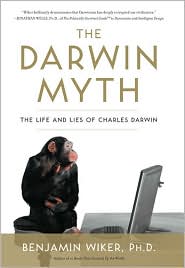Whitewashing Darwinism’s Ongoing Moral Legacy
Is it somehow petty, offensive, exploitative, and beyond the pale to point out how the Holocaust Memorial Museum shooter, who murdered a guard on Wednesday, writes about evolution in his sick manifesto? Should it be considered beneath one’s dignity to quote the man and let his words speak for themselves?
James von Brunn, the suspect in question, is a white supremacist, a bitter anti-Semite, a Holocaust-denier, a wacked out conspiracy theorist, who served more than 6 years in a federal prison for attempted kidnapping. All this is fair game to report. Everyone agrees to that. But the fact that he writes of “Natural Law: the species are improved through in-breeding, natural selection and mutation. Only the strong survive. Cross-breeding Whites with species lower on the evolutionary scale diminishes the White gene-pool” — that’s somehow inappropriate to note in public?
That seems to be the message from the media, which has ignored the fact, and from some readers who have responded to my blog on the subject. I realize the topic is uncomfortable for all sides in the evolution debate. So let’s try to step back and consider this rationally.
It’s historically undeniable that Darwinian thinking forms a thread linking some of the most reprehensible social movements of the past 150 years. I and many other people, including professional historians (which I’m not), have written about this repeatedly and from many different angles. By all means check out my own most recent contributions on the theme of “Darwin’s Tree of Death.”
Read More ›






































